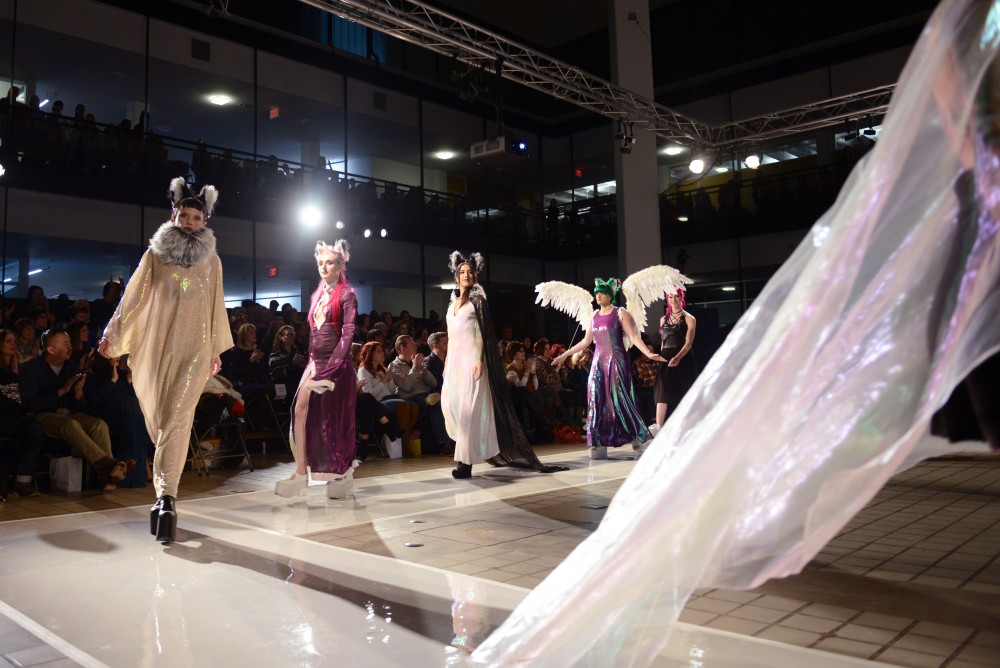Each February, seniors in the University of Minnesota’s Apparel Design Program hold a fashion show — the event is the culmination of four years of skill building necessary for their industry.
“Some of us had never sewn before coming into this major,” University apparel design senior Abby Schumacher said. “To be able to learn together and grow as friends and classmates and create this amazing show was really special.”
The show serves as a launch pad for designs that can be shown to prospective buyers. Each student is given the opportunity to come up with pieces that could pique the interest of businesses or become a part of their portfolio.
This year, the show was called “Instinct.” It was held Saturday.
“We wanted something that captured how we all work and create,” Schumacher said. “We work instinctively.”
Planning began in the fall semester with a required class for seniors. Students began by sketching out ideas, which were eventually pared down and, after making pattern samples, turned into final garments. Each student created four or five different looks to showcase in the program.
The responsibilities that come with planning a fashion show are numerous and far-reaching. On top of creating their own garments, students had to worry about lighting, sound, video, ticket sales, marketing and makeup. The project serves as an exercise in running both the creative and the business sides of the fashion industry.
One student, senior art and apparel design major Sarah Klecker, was drawn to create something unique to her personality.
“I started by researching a target market that I felt passionate about,” Klecker said. “I’ve always been interested in athletic design because I’m a runner. And as a runner, [I’m inspired by] the women that I run with.”
Klecker’s collection is called “Spark” — a nod to the passion and joy an athlete feels whilst playing their sport. Using the name as a jumping off point, Klecker came up with an aesthetic that helped her choose which colors, prints and fabrics to use.
“Then began the endless process of ideating,” Klecker said. “Hundreds of designs were sketched and refined. That was mostly during the summer.”
When class began this fall, students presented and critiqued their final design ideas. From there they began the most difficult process — creating the garments.
“The foundation of good design is having empathy for the people you’re designing for,” Klecker said. “It’s about feeling for the problems they face so that through design you can bring joy to people you design for. That’s the goal.”
For many students, apparel design is less about creative self-obsession and more about making others feel good about how they look.
“I think design in general is something that tends to be undervalued,” Klecker said. “There’s a stereotype of fashion designers as materialistic and egocentric. The reality is the opposite. Being a designer is a selfless endeavor.”








